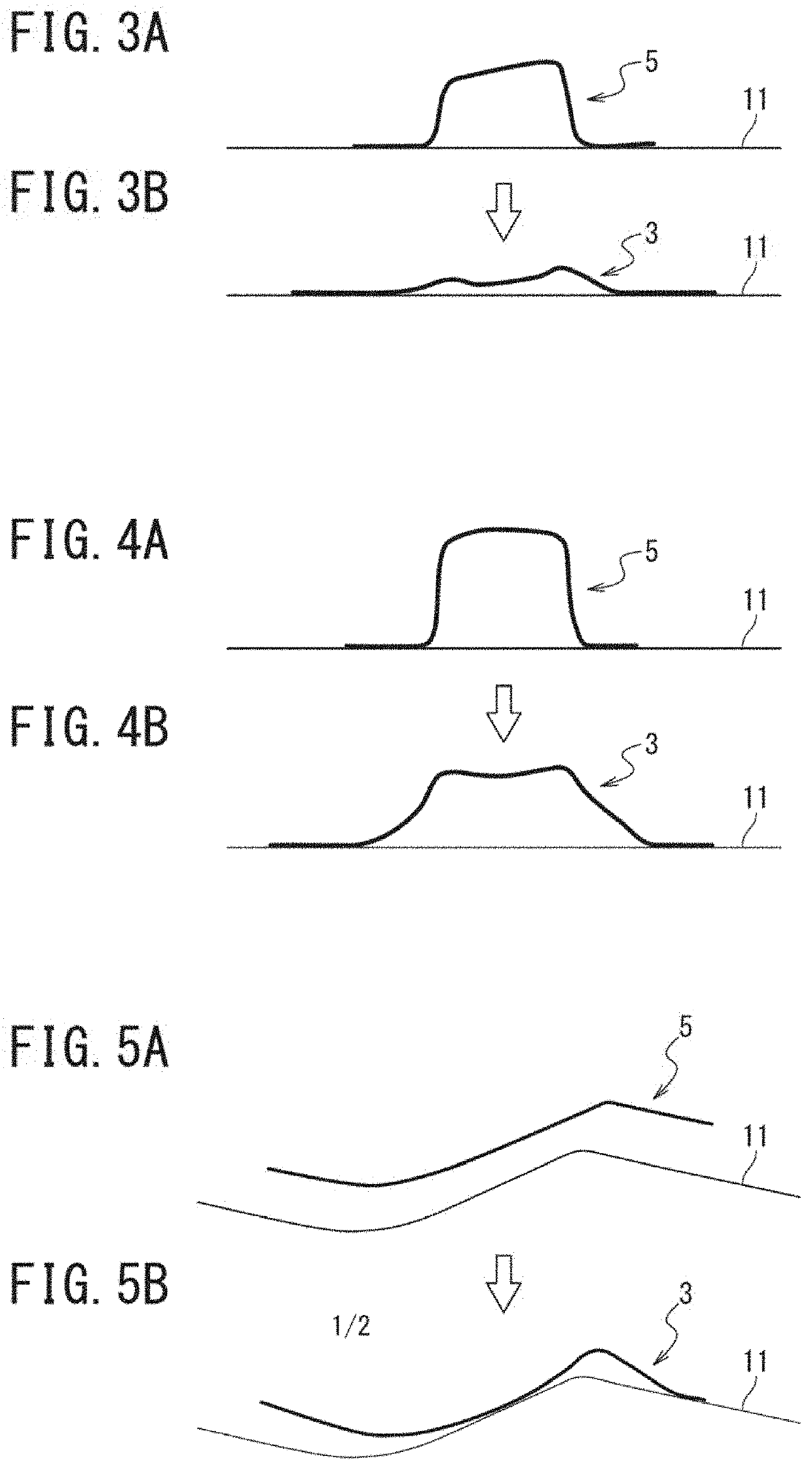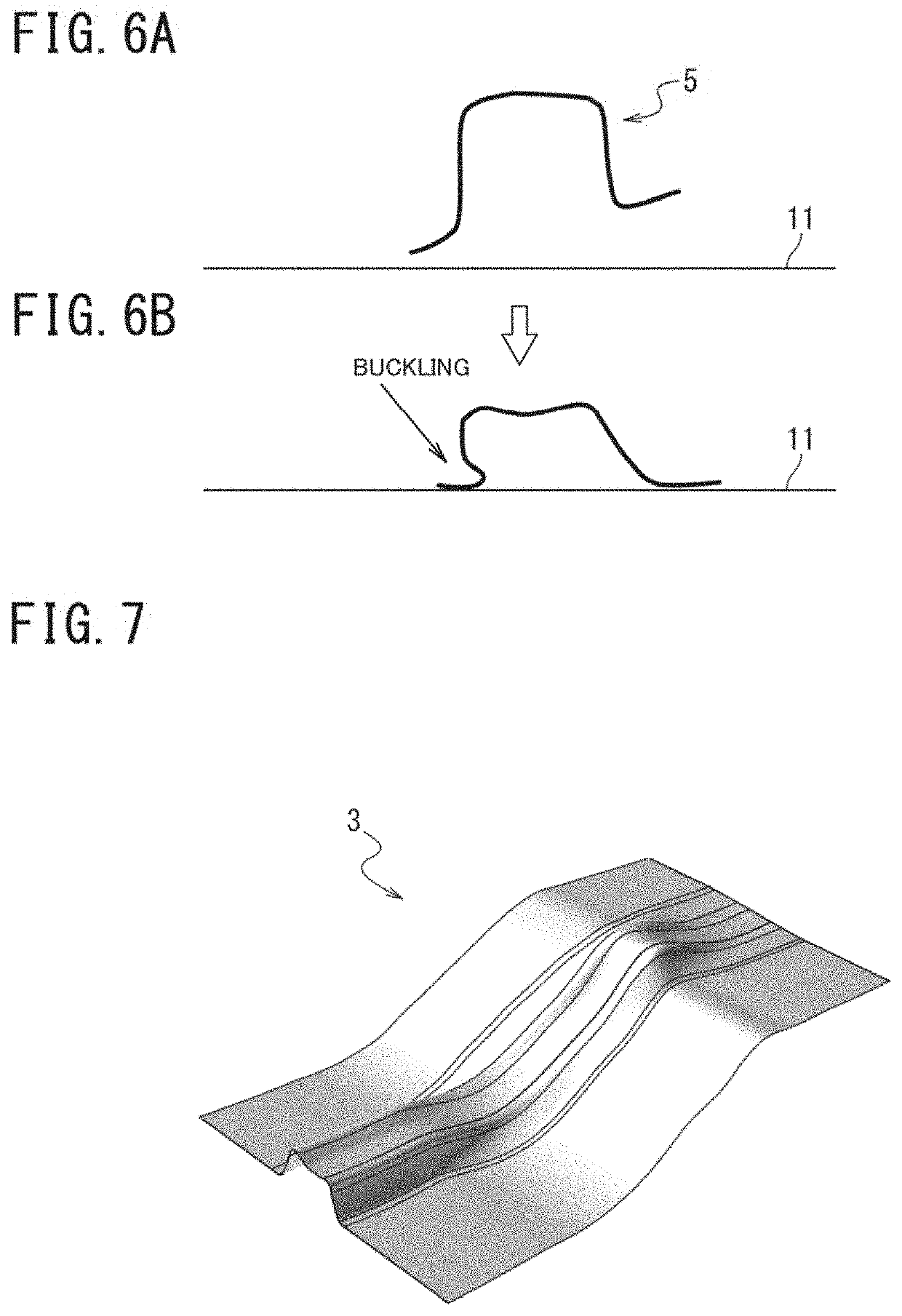Method for designing mold shape and method for producing pressed part
- Summary
- Abstract
- Description
- Claims
- Application Information
AI Technical Summary
Benefits of technology
Problems solved by technology
Method used
Image
Examples
example 1
[0084]Example 1 is a case where the same preformed shape 3 as that of FIG. 7 was formed by drawing (first step 2), and then formed into a component shape by stamping in the next step (second step 4).
[0085]In the above Example 1, the metal sheets A to B had no cracks or wrinkles, and the metal sheets C to D had small sheet thickness reduction.
example 2
[0086]In Example 2, the same preformed shape 3 as that of FIG. 8 was formed by drawing (first step 2), and then formed into a component shape by stamping in the next step (second step 4).
[0087]In this Example 2, the metal sheets A to C had no cracks or wrinkles, and the metal sheet D had small sheet thickness reduction.
example 3
[0088]In Example 3, the same preformed shape 3 as that of FIG. 9 was formed by drawing (first step 2), and then formed into a component shape by drawing in the next step (second step 4).
[0089]In the above Example 3, all of the metal sheets A to D had no cracks or wrinkles.
[0090]As shown in Table 2, it has been found that when manufacturing a shape that causes cracks and wrinkles when press formed into the component 5 having the desired three-dimensional shape by the single step, as in Comparative Example 1, press forming based on aspects of the present invention, as in Examples 1 to 3, improves cracks and wrinkles to manufacture the component 5 having the desired three-dimensional shape. In this case, it has also been found that aspects of the present invention enable the preformed shape 3 to be determined by simple means even when manufacturing a component including the component 5 having the complicated three-dimensional shape.
PUM
| Property | Measurement | Unit |
|---|---|---|
| Fraction | aaaaa | aaaaa |
| Fraction | aaaaa | aaaaa |
| Shape | aaaaa | aaaaa |
Abstract
Description
Claims
Application Information
 Login to view more
Login to view more - R&D Engineer
- R&D Manager
- IP Professional
- Industry Leading Data Capabilities
- Powerful AI technology
- Patent DNA Extraction
Browse by: Latest US Patents, China's latest patents, Technical Efficacy Thesaurus, Application Domain, Technology Topic.
© 2024 PatSnap. All rights reserved.Legal|Privacy policy|Modern Slavery Act Transparency Statement|Sitemap



